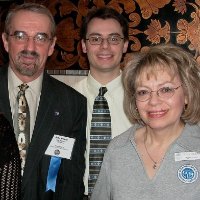The dispute centres around cases against the company Georgia Pacific (GP), which manufactured a jointing compound containing chrysotile asbestos. They are being sued by former workers with mesothelioma. The company funded a number of research studies in 2005 to aid its defence, and the results were published in various scientific journals. One of the authors on most of the papers was Stuart Holm, GP Director of Toxicology and Chemical Management, and it is alleged that he along with the GP in-house lawyer were significantly involved in the pre-publication review process. Did the GP employees exert undue influence on the final conclusions of the research and should their involvement in the publications have been declared to the journals involved? The US courts have ordered an investigation to identify whether any attempted fraud has taken place. The court said in support of their decision that:
‘Holm co-authorized nearly all of the studies, which were intended to cast doubt on the capability of chrysotile asbestos to cause cancer. On the two articles that he did not co- author, he and GPs counsel participated in lengthy “WebEx conferences” in which they discussed the manuscripts and suggested revisions. Despite this extensive participation, none of the articles disclosed that GP’s in-house counsel had reviewed the manuscripts before they were submitted for publication. Two articles falsely stated that “GP did not participate in the design of the study, analysis of the data, or preparation of the manuscript.” For articles lead-authored by David M. Bernstein, PhD, and co-authored by Holm, the only disclosure was that the research was “sponsored” or “supported” by a grant from GP. The articles did not disclose that Holm was specially employed by GP for the asbestos litigation or that he reported to GPs in-house counsel. Furthermore, there were no grant proposals, and Dr. Bernstein was hired by GP on an hourly basis. Nor did the articles reveal that Dr. Bernstein has been disclosed as a GP expert witness…‘
One of the co-authors on three of these papers is the Edinburgh University toxicologist Professor Ken Donaldson. There have been a number of allegations about Ken’s conduct in relation to these studies, particularly in relation to the conflict of interest declarations he made when publishing the papers, and since. These allegations are extensively documented in the Hazards article written by Rory O’Neill. However, we should recognise that Ken is an eminent scientist and his work has furthered our knowledge of how inhaled asbestos fibres damage human health. In fact, he and his team have recently been awarded the accolade of Best Paper in the journal Toxicological Sciences by the Society of Toxicology [1]. At this stage in the court proceedings there is no evidence of deliberate wrongdoing on his part, maybe just as he admits some carelessness and naivety. However, the dispute is being played out in the press – from the satirical mag Private Eye to Nature, and there are now calls from the asbestos pressure groups for his university to disown him. Things are getting personal and Ken feels that he is ‘caught in the cross-fire of litigation’. My view is that we should let the science speak and avoid vilifying the scientists for their interpretation of their data.
There are of course lessons here for all of us. Firstly, it is imperative that authors of scientific papers are fully transparent about who has had opportunity to comment on a manuscript and how these comments were dealt with. In my experience most sponsors – whether they be government, industry or charitable organisations – wish to have the opportunity to comment on research outputs. Most researchers will take note of comments and amend the text as they see fit. However, I see little evidence that this kind of input is acknowledged in publications. Perhaps it is time journals take this sort of issue more seriously and ask for a fuller declaration of interests from authors.
Declaration of interest
Ken Donaldson is a friend and colleague.
Nobody commented on the content of this blog post prior to posting. Since posting I have had offline comments from Rory O’Neill and Laurie Kazan-Allen, and as a consequence I have amended the post to include a reference to the Hazards article about Ken Donaldson.
I have not been paid to write this, although I do get paid to do science by lots of organisations.
Reference
1. Schinwald A, Murphy F, Prina-Mello A, Poland C, Byrne F, et al. (2012) The threshold length for fibre-induced acute pleural inflammation: shedding light on the early events in asbestos-induced mesothelioma. Toxicol Sci 128: 461–470. doi:10.1093/toxsci/kfs171.






























 The EPA maintains State Resource Locators and contact information for several topics: Air Quality – Ambient
The EPA maintains State Resource Locators and contact information for several topics: Air Quality – Ambient









Connect with EHS News